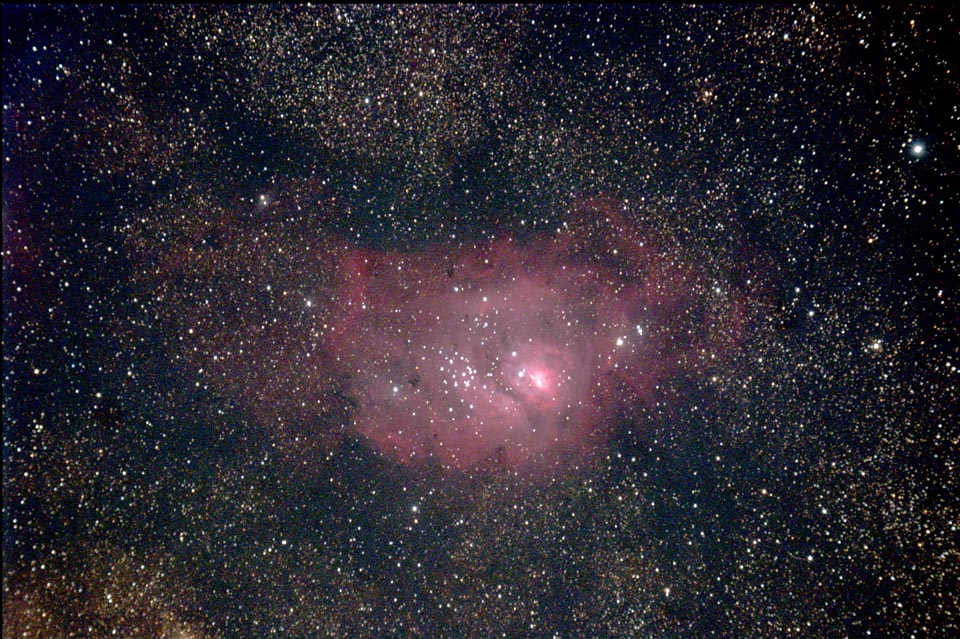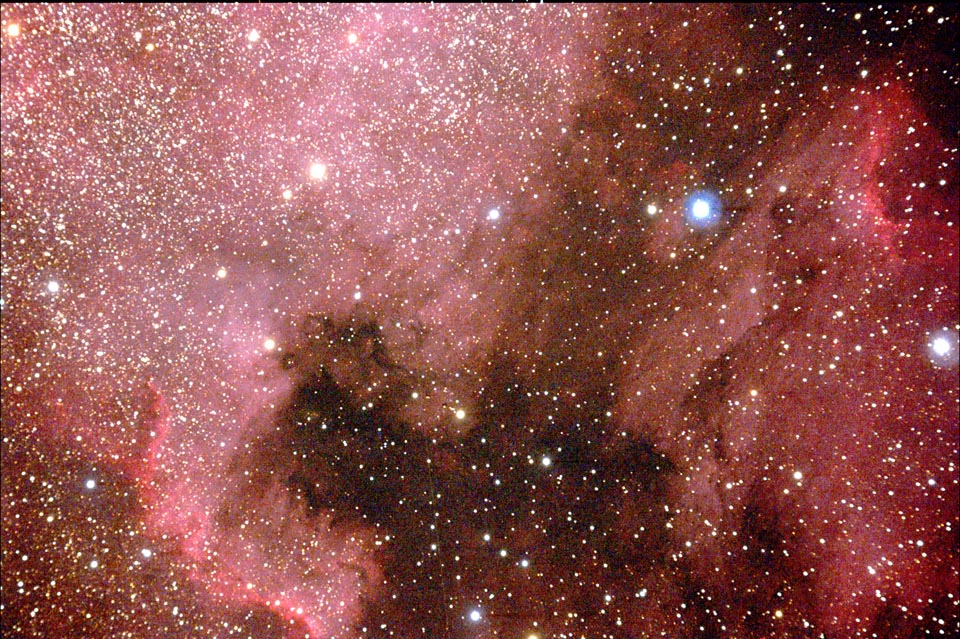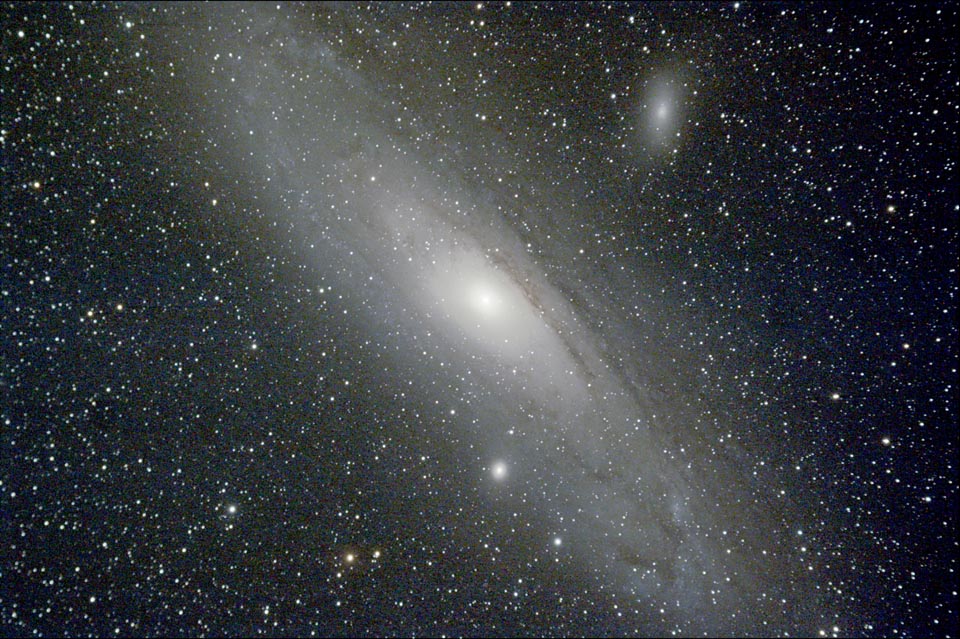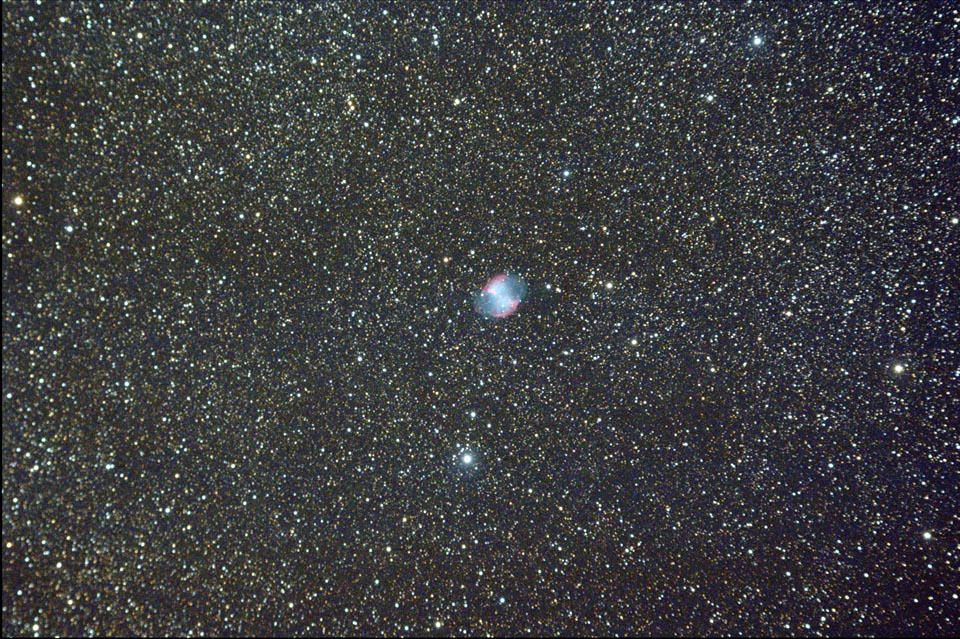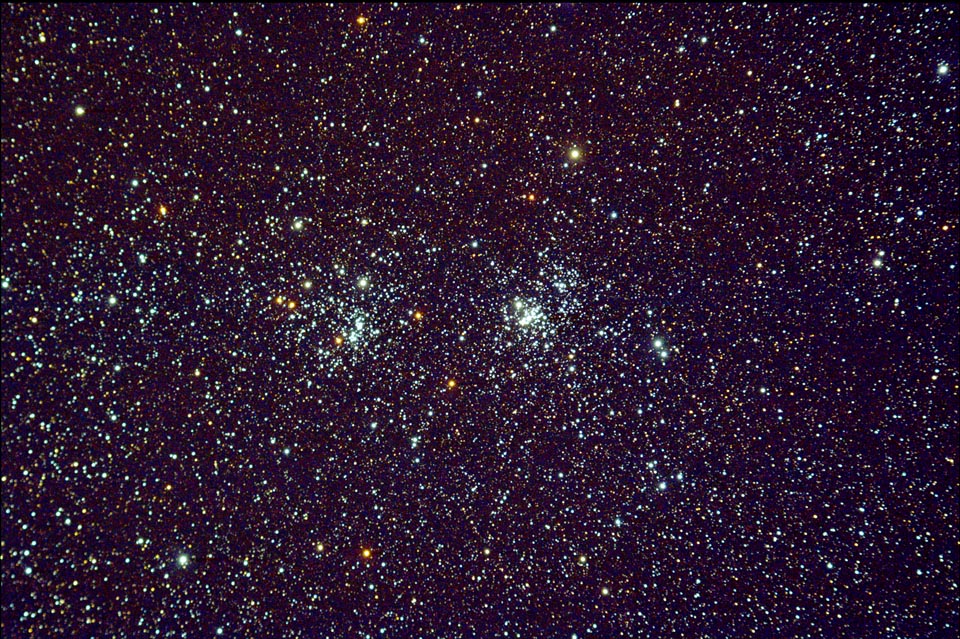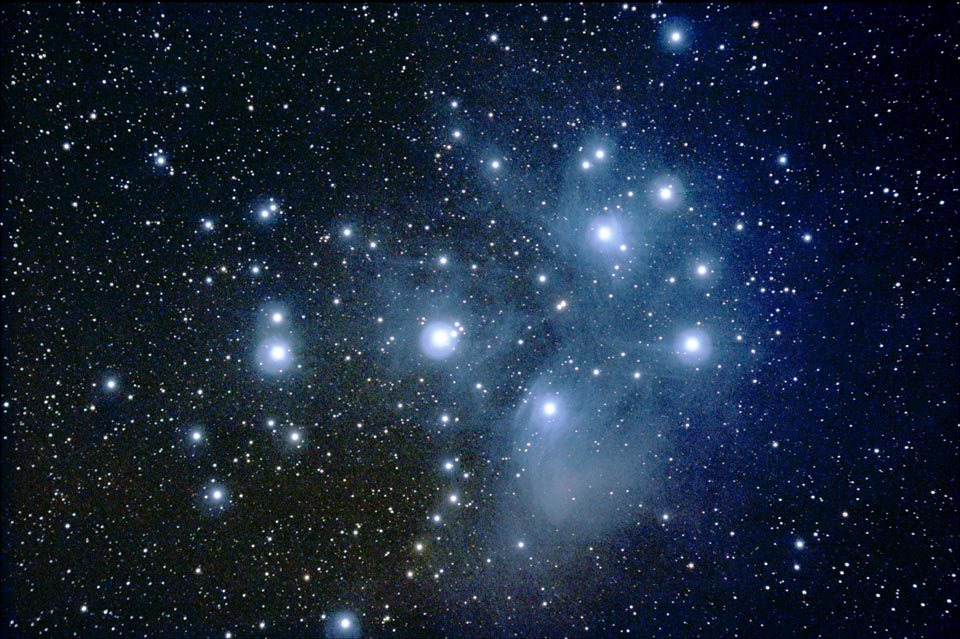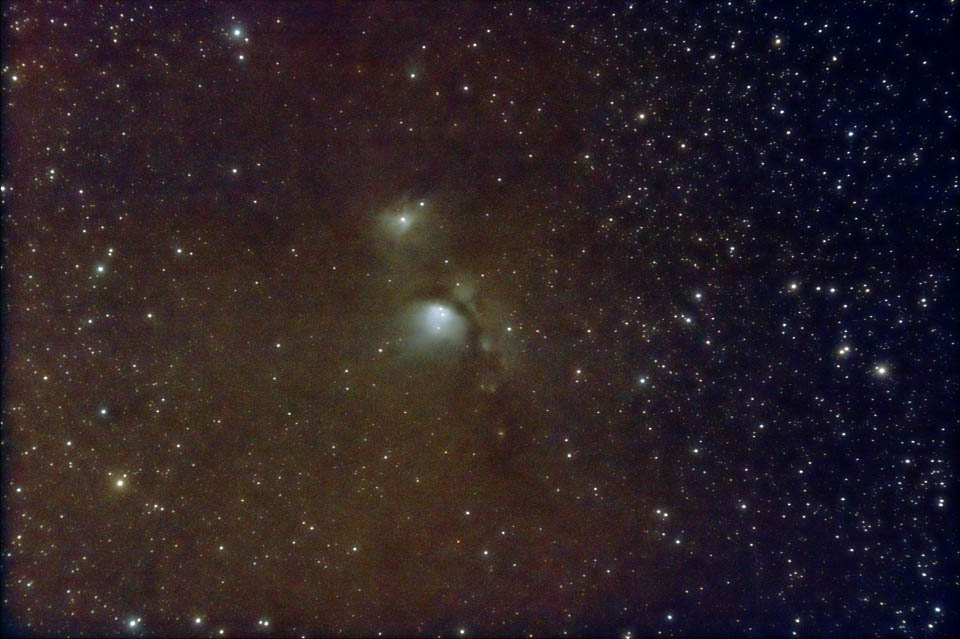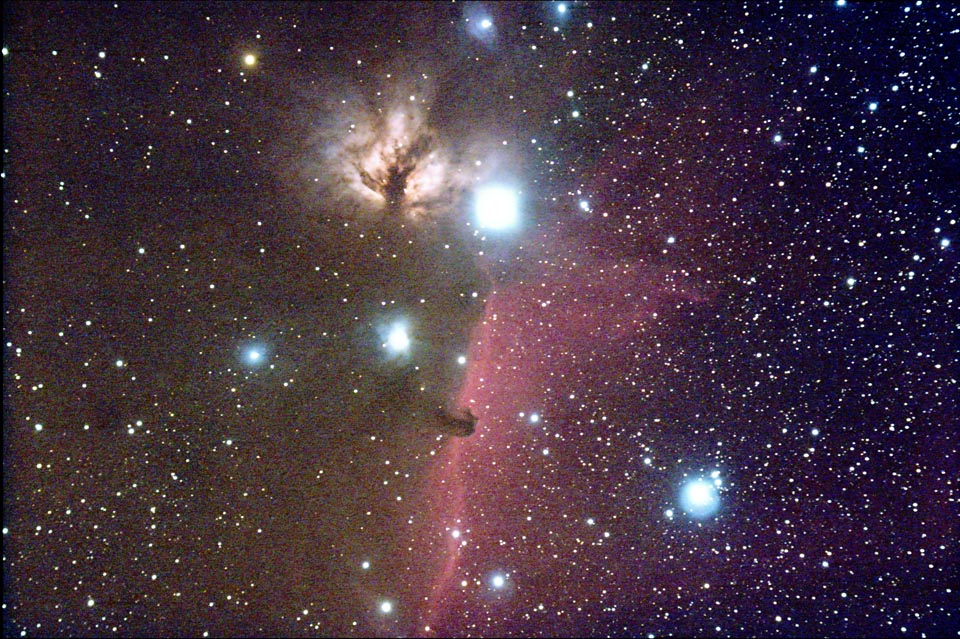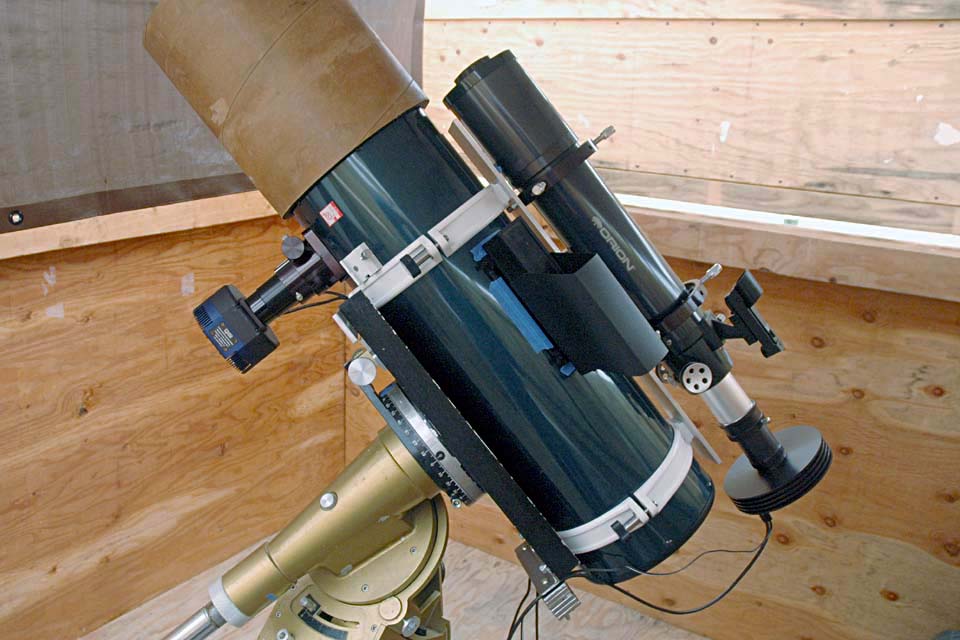Imaging with
Orion's StarShoot Pro
|
Compared to astro-imaging with digital SLR cameras, which are optimized for ordinary pictures, the StarShoot Pro is a dream to use. Why? Because it is designed for astronomical imaging. It is simple to set up, easy to use, and it requires much less monkeying around with adapters and control wires than do DSLRs. Below are some pictures I have taken. All of those shown were taken with an Orion ED80 (an 80 mm f/7 semi-apochromatic refractor) and many are stacks of between five and twenty-four sub-exposures varying in length from 100 to 500 seconds. In most cases you see the entire 3040x2016-pixel frame resampled to 960x640 pixels. I used my trusty Byers 812 mount with no guiding. |
|
Because it was getting down into the trees, my first-night first target was the Lagoon Nebula. This image is a stack made with five exposures of 100 seconds each = 500 seconds total. Sagittarius was way down in the murk, so I was rather pleased with how well it turned out. |
|
A little later the same night, I pointed the telescope high overhead, toward the North America Nebula, and increased the exposure times to 5 minutes. This image is a stack of five exposures of 300 seconds each, for a total of 1500 seconds exposure. |
|
I lost a couple weeks of clear nights when the switch that turns on the tracking motor on my Byers 812 mount died of old age, and by the time I got it fixed, the Moon was lighting the sky. I had to tear the mount completely apart to get at the switch. I figured that the polar alignment would be way off after doing that, so when I went back to making images, I shortened the exposure times to 100 seconds. This one is 15 images times 100 seconds each = 1500 seconds total exposure. But it turned out that the mount base had not shifted, so the reassembled mount was still perfectly aligned on the pole. |
|
The Dumbell looks rather small in this starry field near the galactic equator. This image is another stack of fifteen 100-second exposures, for 1500 seconds total exposure. |
 |
Here is the same Dumbell you see above, but cropped and presented at the original size. The whole image would be considerably wider than your monitor. |
|
The Double Cluster (h and chi Per) displays its strikingly blue stellar content against the cooler, whiter stars of the Milky Way background and a scattering of bright ruddy stars. Total exposure time for this image is 1600 seconds; it is a stack of 16 x 100-second sub-exposures. |
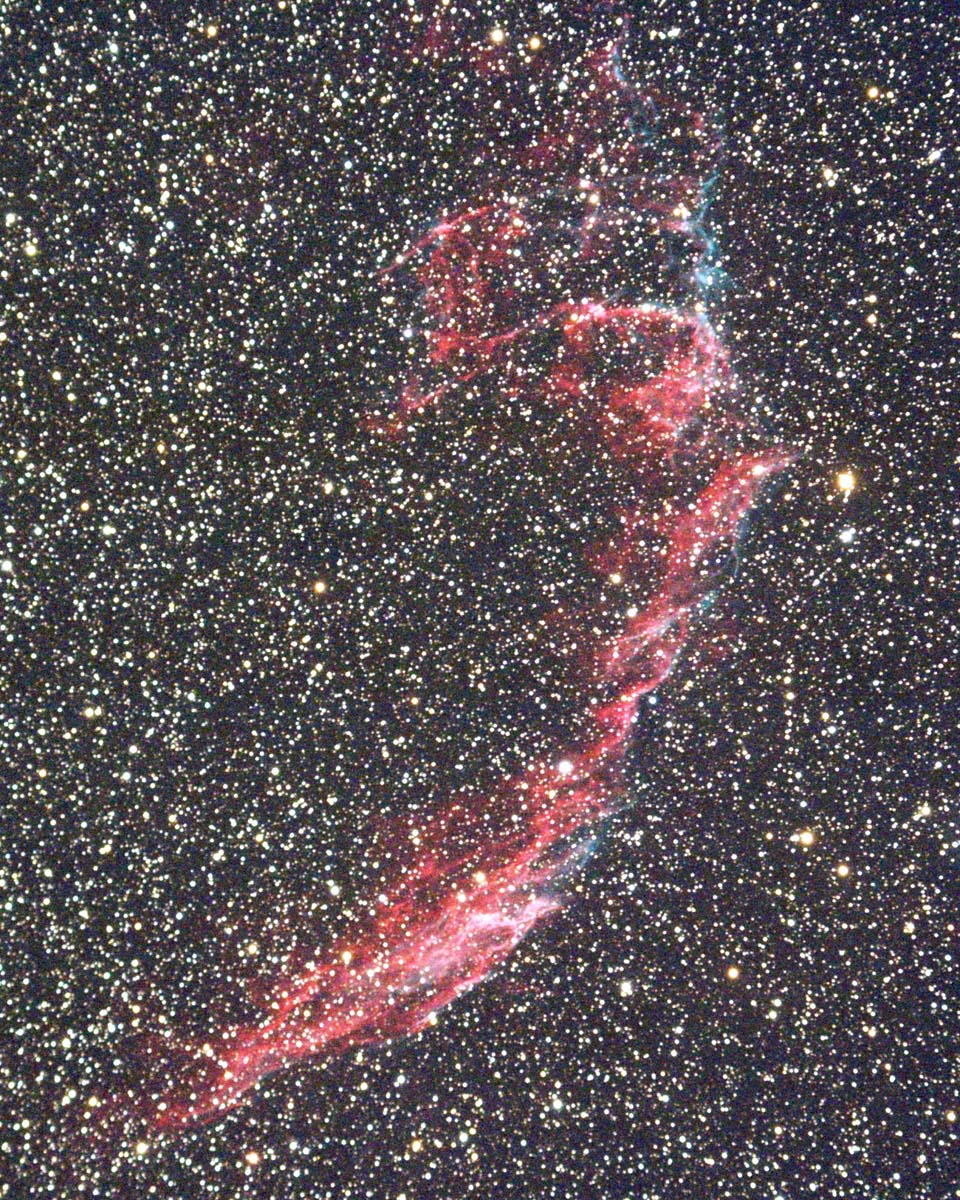 |
On a night everything was dripping wet, I shot 24 images of 180 seconds each, for a total of 72 minutes of exposure time, focused on NGC 6995, the smaller, brighter, eastern side of the Veil Nebula. This is not a full-frame image; it is cropped at about 40% of full size. |
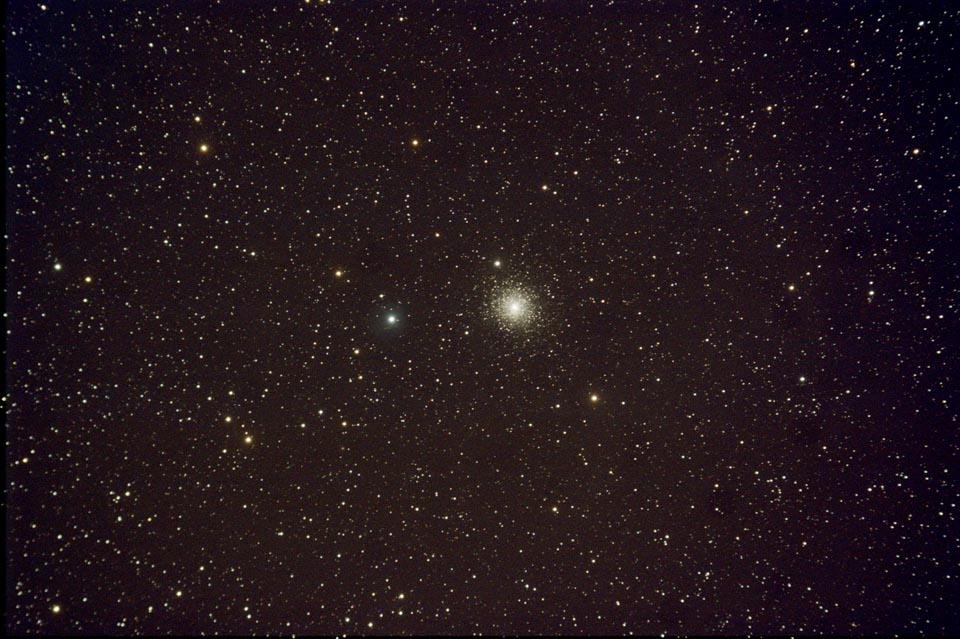 |
M15 is a globular cluster near Enif, the nose-star in Pegasus. Like the Dumbbell, M15 looks rather small, but the cluster is easily resolved. This picture is a stack of 20 images at 180 seconds each, for a total of 3600 seconds -- exactly one hour. |
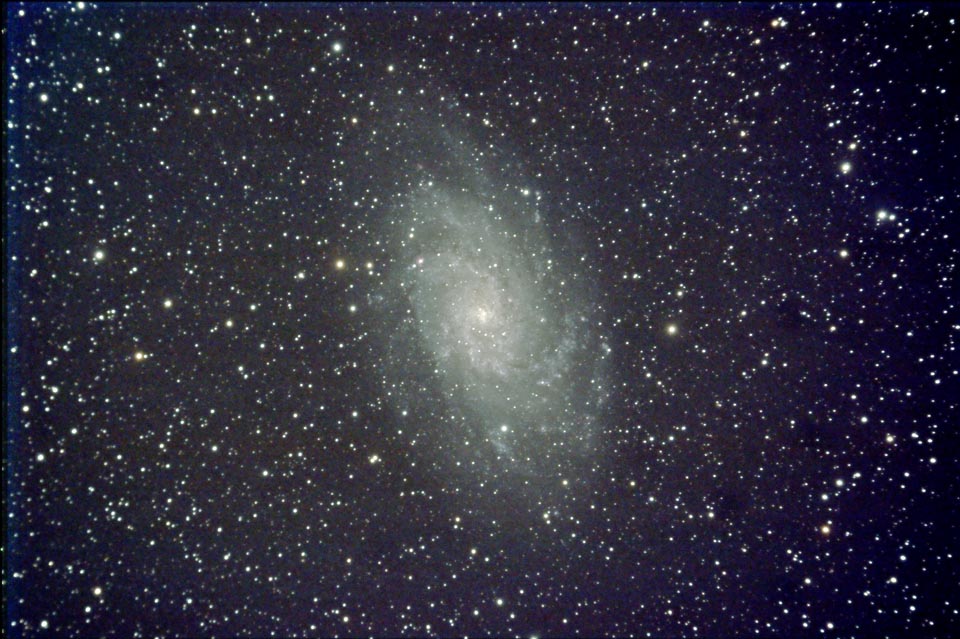 |
M33, the Triangulum galaxy, is notoriously hard to image. With the Moon out of the way, I expended 49 exposures of 180 seconds each. Of those, 45 came out well, so the total exposure was 2 hours 15 minutes. Plus I shot 60 matching dark frames -- 3 hours' worth -- to insure proper subtraction of the dark current. |
|
When the Double Cluster is up, the Pleiades are close behind. With the Byers 812 mount working better than ever before, I increased my exposures times from the very conservative 100 seconds to 180 seconds. This is a stack of 14 x 180 seconds = 2520 seconds = 42 minutes total. |
|
The placement of one particularly tall Douglas fir tree and the relative declinations of target objects in the constellation Orion means that I shot M78 before either M42 or the Horsehead. This one is seven 180-second exposures for a total of 1260 seconds. This image would benefit from more time! |
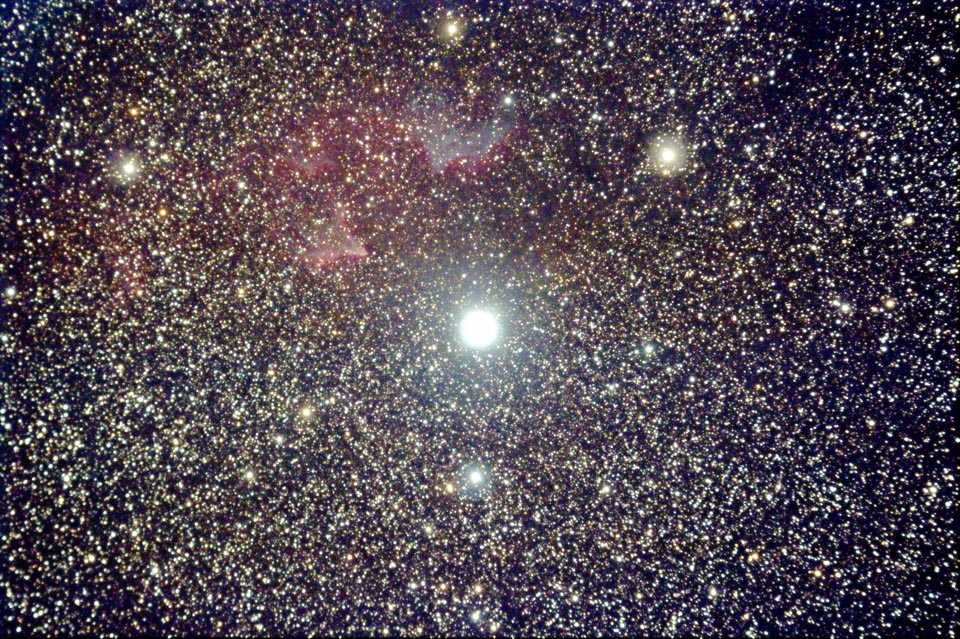 |
Close to gamma Cassiopeiae, the bright star in the middle of the "W" are two faint nebulae: IC 59 and IC 63. To my surprise, 18 images at 300 seconds each was enough to record these faint nebulae embedded in an extremely rich Milky Way starfield . |
|
I'd be the first to admit thAt I should have done it the other way around: take the 22-image sequence of the Horse Head Nebula and use just 8 for the Orion Nebula. But that's not what I did. This image of the Horse Head got only 8 x 180 seconds = 1440 seconds total. |
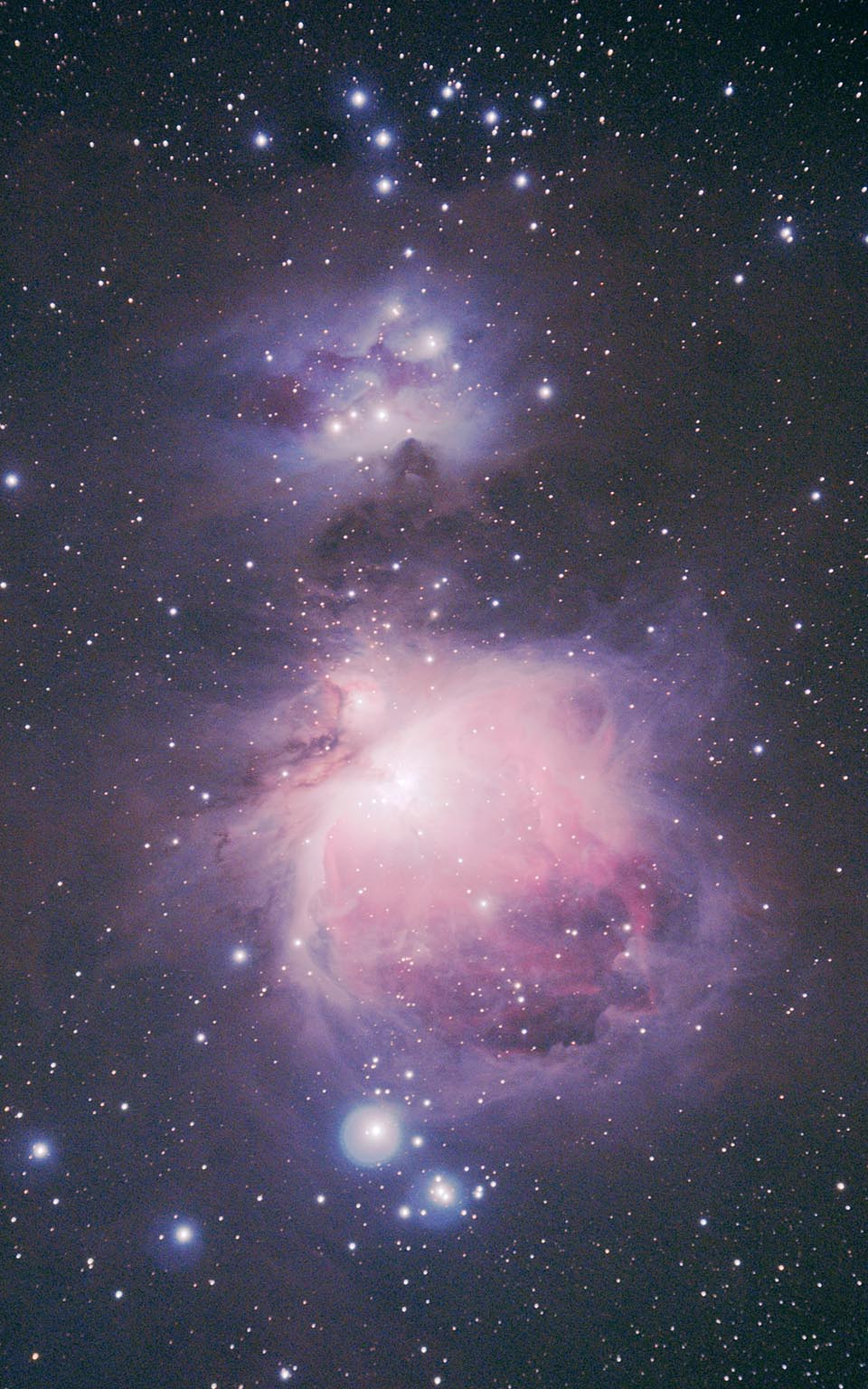 |
So what if everybody and his dog has a taken one of the Orion Nebula? This image would have won first prize in any astrophotography contest back in 1980, and everybody would have thought it was a three-hour exposure with a 16-inch Newtonian on hypered emulsion. I love the rose-and-violet colors of this object. As usual, I trusted the mount to do its job; this image is tracked but not guided. This is very nearly the full frame, but rotated 90 degrees counterclockwise from most of the preceding pictures. Total exposure is 10 X 18 second for core detail plus 22 x 180 seconds for outlying structure = 4140 seconds. |
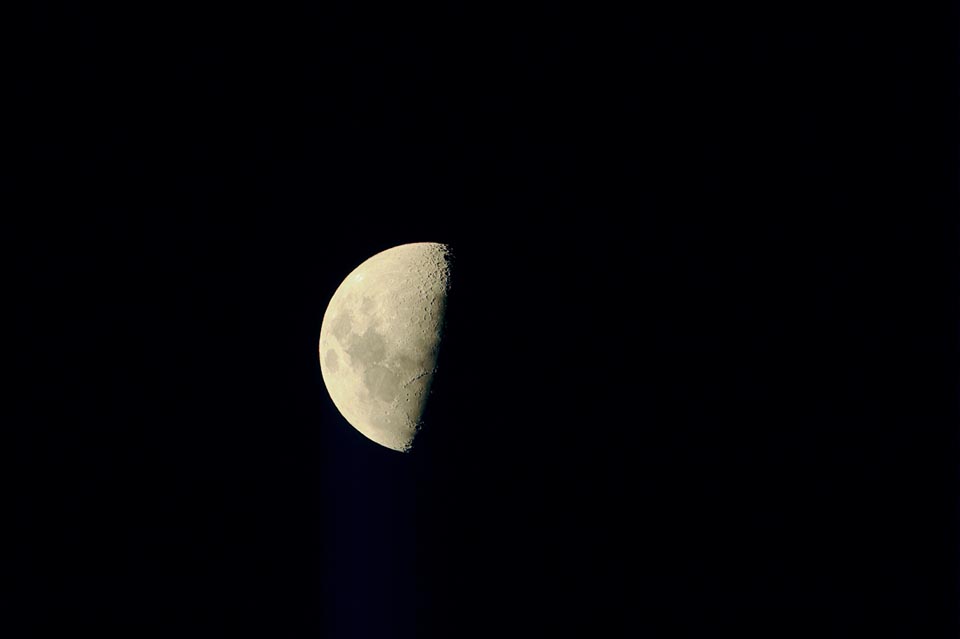 |
For scale, here is the Moon with the same 80mm f/7 refractor and StarShoot Pro CCD camera. Total exposure time was 0.004 seconds on a slightly hazy night. Amazingly, the StarShoot Pro can handle the Moon and deep-sky objects with nothing more than a change in the exposure time. |
 |
 |
Finally, here are the spectra of Capella (above) and Vega (below) taken by placing a large prism over the telescope objective and allowing the star to trail for 30 and 60 seconds, respectively. Capella is a binary star consisting of two class G giant stars (G8III and G0III) orbiting one another every 104 days. Its spectrum is rich in metallic lines of ionized calcium and iron, plus weak hydrogen lines. Vega is a blue-white main-sequence (class A0V) star with prominent lines of hydrogen. |
|
This is my setup with the Orion ED80 and the StarShoot Pro piggybacked on the Vixen R200SS 8-inch f/4 Newtonian plus Paracorr coma corrector. The Vixen has my QSI 532ws CCD at its focus. The extension on the tube of the R200SS is a light baffle that eliminates gradients and scattered light from the computer. |
Return to Richard Berry's Home Page |
